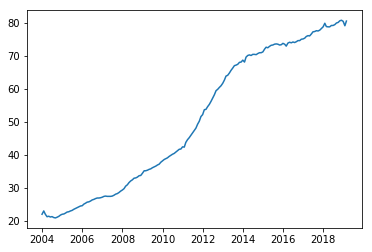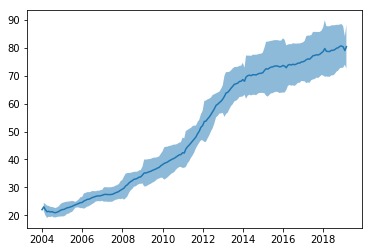def sieve_python(limit):
is_prime = [True]*limit
is_prime[0] = False
is_prime[1] = False
for d in range(2, int(limit**0.5) + 1):
if is_prime[d]:
for n in range(d*d, limit, d):
is_prime[n] = False
return is_prime
This returns a list is_prime where is_prime[n] is True n is a prime number.
The code is straightforward but it wasn't fast enough for my taste so I decided to time it:
from timeit import timeit
def elapse_time(s):
s = timeit(s, number=100, globals=globals())
return f'{s:.3f} seconds'
print(elapse_time('sieve_python(100000)'))
1.107 seconds1.1 seconds to check 100000 values sounded indeed too slow so I decided to precompile the function with Numba:
from numba import njit
@njit
def sieve_python_jit(limit):
is_prime = [True]*limit
is_prime[0] = False
is_prime[1] = False
for d in range(2, int(limit**0.5) + 1):
if is_prime[d]:
for n in range(d*d, limit, d):
is_prime[n] = False
return is_prime
sieve_python_jit(10) # compilation
print(elapse_time('sieve_python_jit(100000)'))
0.103 secondsThe only addition to the previous version is the decorator @njit and this simple change resulted in a whopping 10x speed up! However, Michal shared with me some code making me notice that combining Numba with the appropriate Numpy data structures leads to impressive results so this implementation materialized:
import numpy as np
@njit
def sieve_numpy_jit(limit):
is_prime = np.full(limit, True)
is_prime[0] = False
is_prime[1] = False
for d in range(2, int(np.sqrt(limit) + 1)):
if is_prime[d]:
for n in range(d*d, limit, d):
is_prime[n] = False
return is_prime
sieve_numpy_jit(10) # compilation
print(elapse_time('sieve_numpy_jit(100000)'))
0.018 secondsThe speed up respect to the first version is 61x!
Lessons learned:
- Using Numba is very straightforward and a Python function written in a decent manner can be speeded up with little effort.
- Python lists are too heavy in some cases. Even with pre-allocation of the memory they can't beat Numpy arrays for this specific task.
- Assigning types correctly is key. Using a Numpy array of integers instead of bools in the function sieve_numpy_jit would result in a slow down.



